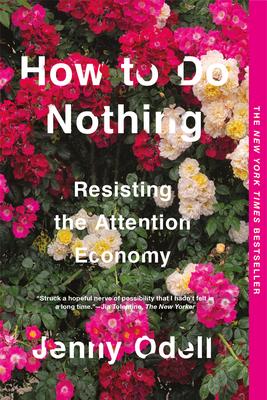Halfway There: 3 Ways to Use Social Media to Build a Bridge to Blogging
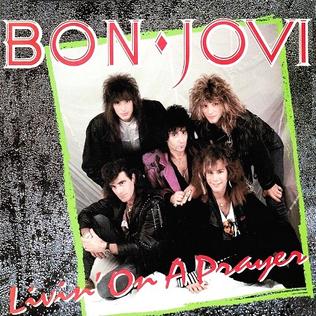
While social media as we know it may be on its way to obsolescence, that doesn’t necessarily mean you’re living on a prayer. In fact, I would argue, all those years of comments, posts and retweets have you perfectly poised for transition to a brave new era of online connection. Half of everything you need to know about posting and sharing your ideas of your own platform—as opposed to one helmed by a megalomaniac hooked on algorithms that make the world worse—you’ve learned already through years of social media use.
Here are three key ideas you can use to build a bridge to blogging.
- Continue to embrace the celebration of all things ordinary: You really don’t really need an occasion to post to Instagram, as demonstrated by my habit of posting a photo of my teacup most days, an illumination of the small ceremonies inherent in our quotidian routines. This could be construed as a criticism of the platform, perhaps (“All it is is people posting pictures of their lunch.”) but it’s actually one of my favourite things about social media, that you don’t really have to go out of your way to generate content. And the same is true for blogging. Share the world as you see it, from right where you are, a singular point of view that is yours and nobody else’s.
- Promote your work with pithy posts: I learned this one from digital-marketing pro Avery Swartz when I was asking her about promoting my novels on my website, whether I should be using a sidebar, etc. etc. I already knew that being a blogger made me better on social media but I’d never considered it could work the other way around until she told me to share about/promote my books on my website the same way I do on Instagram, short and snappy posts like this one. (Sidebars are so two decades ago anyway…)
- Cross-post your best stuff: It’s true, social media is the quickest way to get your writing in front of readers, and the dopamine hits of their “likes” is most rewarding. But social media is also so ephemeral, and it feels wrong for me to be pouring my heart and soul into writing unpaid content for the benefit of Mark Zuckerberg. And so I’ve taken to cross-posting my most thoughtful/meaningful posts to my blog, which means they live in a place that’s mine where content can’t just disappear. They also reach a slightly different audience there. And even better? I’ve taken to writing these posts on my blog first where my writing benefits from an actual keyboard and unlimited characters, and then cutting and pasting to Instagram for the benefit of readers there. The very definition of #BacktotheBlog, and you know what? It feels great.
And now here’s something cool: I’m giving away free tuition for my self-guided blogging course FIND YOUR BLOGGING SPARK for one student this winter. To be entered, sign up for my Blog School Newsletter. (If you’re already on the list but want to be considered, send me a message and let me know!) I will be making a draw at the end of January.
Another lovely endorsement!

“I’ve been blogging, off and on, since 2008; more off than on. In the weeks life did not hand me a topic about which to write, I turned to Blog School for my spark, and without exception, I emerged inspired and with the makings of a post.
Find Your Blogging Spark helped me understand the history of blogging, its iterations, and provided all sorts of technical tidbits, but mostly it reminded me my stories matter and I don’t need a million followers to justify publication. That I can claim “my little corner of the Internet,” where I can grow and change and make mistakes and write to find meaning. Start a conversation.” —D.
Build a Blog!
Ted Lasso and the Internet
The other day I stumbled onto a Reddit thread. I don’t usually visit Reddit, but I was searching for information about a gift card fundraiser my Member of Provincial Parliament was running for local families who’d lost their homes in a fire, and someone had posted the flyer on Reddit, others following up on how the fundraiser sounded like a scam (which it’s not, since I’d been emailing my MPP directly about it) and it just occurred to me how everybody on the internet always knows everything all the time, especially when they don’t, and maybe this is the very worst thing about the internet altogether (which is saying a lot).
This idea underlined during the brief moments I’ve spent—before I sensibly manage to pull myself away—reading comments on posts about obnoxious right wing protests, how little chance those commenting (on either side!) are giving themselves or those who disagree with them to listen and learn, to think and consider. How nobody is curious, and how those who support the protests are prone to knee jerk defensiveness, which results in things being irrevocably stuck.
I’m thinking too about how years of writing on the internet has reprogrammed my brain so that I’m consistently taking up the pose of expert, how I can barely know anything without considering turning those ideas into a listicle of life hacks.
And how even movements that began with best intentions—like women owning their authority and using “Dr” in their Twitter profile if they possess such a title, but how that’s led to a whole bunch of “Doctors” peddling misinformation about vaccination. (I’m looking at you, Member of Parliament for Haldimand—Norfolk.)
How nobody is asking questions, unless they’re “just asking questions,” and we know what that’s all about.
How nobody is ever asking questions that they don’t (think they) know the answers to already.

Which brings me to Ted Lasso. (Do all journeys eventually arrive at this place?)
A show I resisted watching because everyone promised that I would love it, and I do not like being told what to do (which connects to the overall idea of this post in a curious way…) but then I had a nervous breakdown in mid-December and all my plans to spend the holidays watching bleak murder mysteries went out the window, and watching Ted Lasso became part of my convalescence, and it turned out that everyone was right, for once.
I loved Ted Lasso so much. On Ted Lasso, no one knows anything—Ted himself, most of all. AND THAT’S OKAY. Because when you mean not knowing with curiosity, that’s where amazing things can happen. It’s where you grow and learn and connect, and discover fascinating things about yourself, and others. Curiosity leading to wonder and awe, which are two more elements thoroughly missing from online discourse.
Sometimes I think that the appeal of online rage is that it’s the closest the internet ever brings us to really feeling anything.
And so I’ve been thinking a lot about how I want to inject everything I do online with a spirit of curiosity, and exploration. Drilling out, not down—this is a different kind of curiosity than what you might see on neighbourhood groups racially profiling passers-by or Reddit threads trying to prove that local celebrity so-and-so is cheating on his spouse. A spirit of curiosity that leads to connection instead of disconnection, a spirit of curiosity imbued with generosity and which exists to make the world larger instead of so small that it can even be tucked away inside a flat rectangular device that you might carry around in your purse or pocket.
4 Books for Bloggers
How to Do Nothing, by Jenny Odell
You’ve probably already heard about Jenny Odell’s How to Do Nothing, a book that counters the constant buzz of online life with a exploration of how to return to true focus and connection. It’s a book that’s relevant to bloggers for how it underlines that a lack of context is what makes social media so difficult to navigate, the equivalent to screaming into a noisy crowded room. And what are blogs if not context? You have an idea of who you’re talking to. Your readers know who they’re reading. A return to context and real connection is inspiring and refreshing.
*
Beginners: The Joy and Transformative Power of Lifelong Learning, by Tom Vanderbilt
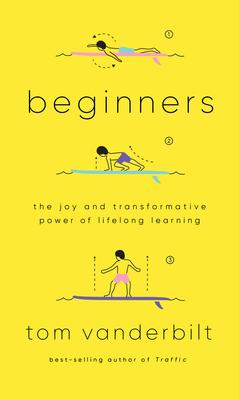
The thing about blogging is that you have to begin again every time you do it, and I think a successful blogger requires a willingness to remain engaged with and curious about the world in order for the blog to be enjoyable and sustainable. (The blogger who only writes about everything she knows already very fast runs out of material.) Vanderbilt’s exploration of lifelong learning is a fun and engaging read, and might inspire you to take a trip outside your comfort zone, which is always a great way to find something to write about.
*
Phosphorescence: A Memoir of Finding Joy When Your World Goes Dark, by Julia Baird
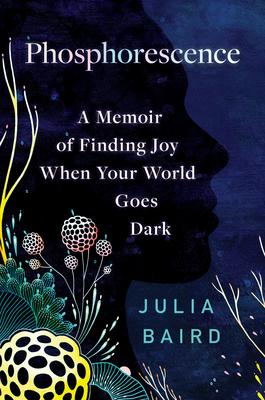
Not a straightforward memoir, but not just reportage either, instead a fascinating hybrid, a nice companion to Katherine May’s Wintering, but it drew me in so much more, and is uncannily about many of my own fascinations, among them, swimming, teapots, uncertainty, and why it matters to have fascinations at all.
Phosphorescence is a light from within, and Baird writes about how to seek such light, how to even find it, from the perspective of a woman who’s survived cancer, its return twice more, brutal and painful surgeries and recoveries, on top of a life spent as a patriarchy-fighting Anglican, reporter, historian, biographer of Queen Victoria, cold water swimmer, and avid collector of friends.
And OH, how she writes about friendship. “The cornerstone of my resilience.” Her prose is that gorgeous, and I loved this book at the sentence level, as the ideas and connections blew my mind.
And the disconnections too—this book is strange and meandering, curious in its progression, and in the most wonderful way, it reminded me of blogging, albeit with impeccable polish: “After all this exploring, we should be gazing steadily outward, beginning to find others again, and the brilliance of the world outside our doors.”
*
Good Burdens: How to Live Joyfully in the Digital Age, by Christina Crook
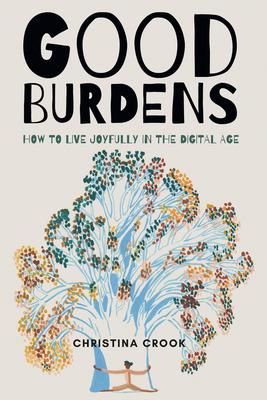
If my blogging course came with a text book, Good Burdens would be it. It was so exciting for me to see so much of my own ideas about living well online (and about how the internet can make your life richer!) in this book, but it also made me think some more about these ideas and I learned a lot from Crook, whose first book was The Joy of Missing Out: Finding Balance in a Wired World. Where to focus our attention, how to foster real connection, why the “good burdens” of our lives give us meaning, why does nature matter, how can we make sure our online choices are deliberate ones? Lots of great questions to ponder and work through, an ongoing project that (like our blogs!) would be nice to continue forever.
The Opposite of Scrolling
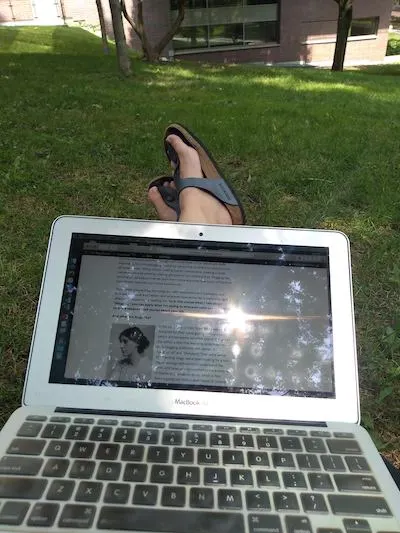
True confession: I don’t have that experience that so many people describe of social media, how scrolling through your feed just makes you feel like your own experience is inadequate, because you don’t go on fancy vacations and have never had the means to hire a decorator, and have never once had your photo taken in a field of sunflowers.
And yes indeed, part of the reason I don’t feel those feelings of inadequacy is because I have a pretty nice life, with health and happiness—I am also RIDICULOUSLY good looking, but that’s another story—even if I’ve never had the means to hire a decorator and while we once did indeed visit a lavender field, all the plants had been stunted by a late season frost.
(I suspect it also helps that I tend to follow real humans whose photos were not all professionally shot on a mountain top during golden hour. #SponsoredPost #Partnership #SoBlessed)
But that’s only part of it. A huge reason why I tend to have a positive experience on social media is because, like many others, I don’t use these platforms passively, but instead I engage with them in an active way. I post photos, tell stories, reach out to friends, solicit feedback, share jokes, and heartaches, frustrations, insights and ideas. Each of my posts, no matter the platform, a kind of message in a bottle—except that it’s different from a bottle for the likelihood I’m going to get some kind of response.
And it’s that response I’m looking for, actually, every time I log in to Twitter, Facebook or Instagram—the first thing I do is check my notifications. (Not unrelated: turning OFF all notification alerts, so that I ACTIVELY have to seek them out, has improved my quality of life. So does not having Twitter or Facebook on my phone.)
So that what I get from social media (when I seek it out. Being deliberate is important) is actually community, genuine connections, friendship and support. And yes, I also want to see photos of your vacation, but it’s easier to not feel depressed when you’re in Hawaii and I’m in Toronto and it’s February when I don’t feel like I’m utterly alone in the world and also when I can scroll back and see a photo of the pretty mug of hot chocolate I posted yesterday. (Instagram is also about the beauty of small things and quiet moments. This matters to me a lot.)
I first started thinking about this the other week while I was listening to this radio interview with Mark Kingwell (“Canadian philosopher Mark Kingwell examines the idea of boredom and our digital devices”) about the dangers of passive scrolling. Kingwell says, “We’re not participants; we’re lab rats and the advertisers are gathering our data, and they’re feeding it back to us in forms like triangulation of desire. They are treating us as resources and they don’t care about you as an individual. They care about your data and about your preferences. So yes I do think that all kind of feeds back.”

But when you do participate, you complicate things with your humanness. (When you participate by blogging on your own website, you complicate things even more, and challenge the idea that the web is a corporate space wholly navigable by algorithm, and this is no small thing!) The opposite of passive is active, and the opposite of scrolling is creation. Yes, for some the answer might be to disconnect from social media and online life altogether, but for most of us something more nuanced is required. (Jenny Odell writes about this splendidly in How to Do Nothing: Resisting the Attention Economy.) The answer is first to be more conscious of how we use our attention online. The second answer to aspire to have a rich and engaged life off the internet. And the third is to be an active participant in online culture. Stop scrolling, and make stuff.
Because you’re Somebody. In fact, we all are.
And even better? I really believe that being an active participant in online culture can improve other parts of your experience IRL. (This is what I mean when, in my blogging course, I talk about how having a blog can make your life richer.) Yes, much of online experience is aspirational, but I think it’s weird that we wholly dismiss aspiration as a bad thing. How can it be, really, if these aspirations are ones it’s possible to realize?
There are so many books I’ve read, and places I’ve visited, cakes I’ve baked, and things I have seen that have been so incredible to experience—things I never would have known about if I hadn’t seen them on Instagram first.
I also remember in the months after my first child was born, when I was (though this was only evident to me in retrospect) deeply unhappy and the online images I was presented with of “perfect motherhood” didn’t actually make me feel less-than, but made me better, that a life beyond “lying on the floor half-naked and weeping” was actually possible. It was important for me to believe that it was, that one day I’d get dressed again.
So many times, the things I’ve seen online have kicked my ass (in the best way) and forced me to get out there in the world.
Because the world is interesting, but also because, otherwise I’d have nothing to blog about, to write about, to post about. And yes, there was that vastly overpriced soft-serve place near my house whose ice cream cones looked fabulous in my Insta-feed, but didn’t taste any better than an ice cream a quarter of the price that came off a truck—but that place actually went out of business. And it’s really not all as superficial as that.
What would happen if you went out of your way to find a flower to photograph tomorrow?
5 Blog Posts You Should Never Ever Write
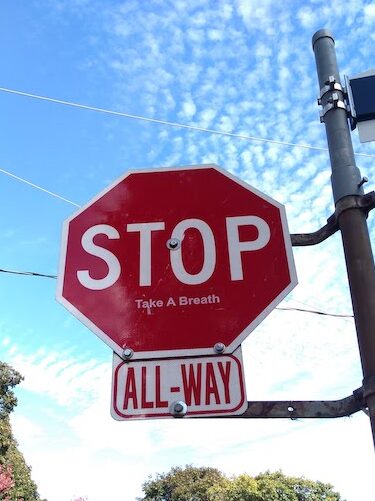
- The post about how you haven’t written a post in a while. Nobody cares. Don’t do it. This kind of post is also a really easy way to continue to not actually write a post.
- An intro post. When you have only one post on your blog, the only person who’s going to read it is somebody who already knows who you are anyway. Just dive in and write the post, and trust that the details will be illuminated for your reader as the blog unfolds. (I have also spent a lot of time down rabbit holes trying to put pieces together and connect the dots with blogs I’ve just discovered. It’s thoroughly engaging. Dare to be an enigma!)
- The post where you express your feelings about the same controversial topic that everybody else is posting about. Unless you have an extraordinary point of view onto the issue, and even then maybe close your browser and think for a week. You are not obligated to wade into fracases. It probably doesn’t serve you. It’s unlikely that it even serves the fracasee.
- The post where you finally get real. This usually comes about after somebody has spent a few months presenting an online self that has proven unsustainable. The best way to avoid this post is to start out real from the outset. Be unabashedly yourself. Don’t try to fit into an online template. If keeping up with your posts is more work that you’d like it to be, find a way to cut down on the labour. The other reason why you shouldn’t post like this is because using your pain for clicks can get to be a bad habit and make you miserable. It is better to be happy and obscure than viral and desperately wounded.
- The post where you upload that political meme. Don’t do it, least of all because it means that your online space will look like everybody else’s, but also because there’s never just one story and if you’re going to pontificate on something, at least do the issue a service by bothering to use your own words.
On Feedback
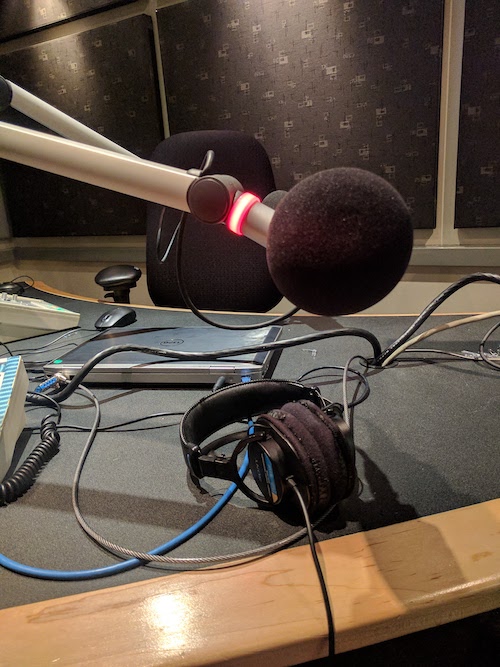
Feedback is something bloggers ask me about a lot. What is the etiquette for responding to comments? Does one need to respond to comments at all if a response does not seem obvious? Is one obligated to entertain comments at all? To which I say, emphatically, NO! A few of my favourite blogs don’t feature comments, and sometimes I even appreciate that as reader—like, just getting out there and reading blogs is a whole lot of work. And so not having to write anything in response to them is just one more thing knocked off my to-do list.
Of course, in the early days of blogging, comments were highly important influential, the single space where the writer and reader could intersect, but this is very different in the days of social media, which is basically early blog comments brought to life. So much so that you might feel as though you already have enough people yammering on in your ear that your blog might be a place where there could be quiet.
One of my favourite bloggers, Rebecca Woolf, doesn’t blog anymore, but her Instagram is definitely her blog in micro-form, and she wrote about this recently in a post responding to questions about why she sometimes turns comments off: “Immediate feedback has a tendency to push me in directions that are less honest and more performative. I will find myself naturally leaning my words in the direction of affirmations which, a lot of the time, isn’t my truth./ Anyway. When I close comments it’s for me. So that I can write without wondering if people will understand me or like me or want to scream in my face about how wrong I am. So that I can share without reinforcement./ It is the only way I have found I can write freely. The paradoxical beauty of boundaries is that, when set with intention, they allow us to unbind.”
“When I close comments it’s for me.” I love that. The same should be true if you welcome them. If you respond to them. Your blog is your space, and how you proceed with the matter of feedback depends on whether or not the feedback serves you—brings you traffic, or insight, or connections. And is it useful? You get to decide.
You Don’t Need Two Instagram Accounts
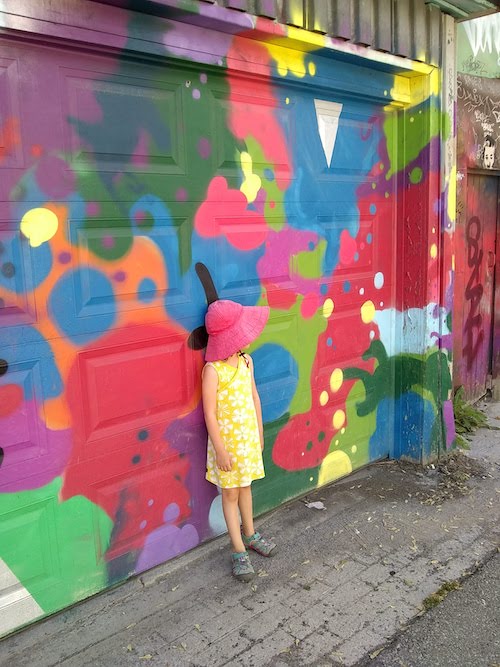
I don’t think you need two Instagram accounts, two Facebook accounts (personal or professional!) or two blogs, or especially more than two blogs. Which feels a little bit hypocritical for me to write because here I am writing it on…my other blog. But case in point, this here is my secondary blog, the one I use to augment my business and support its website, as opposed to my primary blog, which I’ve been investing my heart and soul in for years. What I would really love is to have this blog be a filtered version of my main blog, in which all content relating to blogs and blogging appears—but I don’t know how to make that work between two different websites, and also it helps my website search rankings if there is original content here that is not posted elsewhere. And so here we are.
But I still don’t have two different Instagram accounts, and here’s why (and all of these are lessons I’ve learned from blogging, as I use Instagram as a microblog after all):
- I have already built up a modest following on Instagram. Starting again from scratch would be hard.
- It would be especially hard because I think the people who follow me on Instagram are there for the human content anyway. It would take a special kind of person to go for the offer, “Hey! It’s me, but less of my face and I’m just trying to sell you stuff.”
- Maintaining two Instagram accounts (or two blogs…) is a lot of work. In fact, maintaining one Instagram account and doing a good job of it is a lot of work. And none of this is work that pays well, if at all, so I want to keep the labour as minimal as possible
- You’re right, I could just duplicate my content to two different accounts, personal and professional, but that would be really boring for anyone who bothered to follow me in both places
- Compartmentalization is hard on the soul, my friends. Online advice is often trying to fit us awkwardly into compartments where we don’t quite fit, and I say bully to that. Be your marvellous multitudinous self….
- Because it’s interesting! I am totally up for your professional self, and the good things you have to offer the world as an artist/therapist/guitar picker in Nashville, but I get to know that professional self even better if I’m also privy to photos of your lunch, your cat, and your sunsets. Showing up as yourself is an act of generosity, and I appreciate that, and I am more inclined to be generous myself and support the business of somebody who does so.
- Being your whole self also makes you stand out in your professional field—you’re one of many poets, perhaps, but you’re the only one with a really fat cat called Snowflake who likes to sit on your head while you’re writing. Or maybe you’re obsessed with gluten-free baking, or 1970s cult films, or you collect shoes made out of vegan leather. Online spaces are hybrid spaces, technologically speaking, and there is no reason why the content shouldn’t be too.
- There are parts of our lives where it’s important to draw a line between the professional and personal—I definitely like to put my laptop away at the end of the day. I take holidays from the online world throughout the year. All this is very good for my well-being, but I don’t think insisting on such a line for my online identity would be as much. It’s easier (and more sustainable) to just be a human person everywhere I go.
- This also helps me show up with integrity, when my private self is public facing, and think more deeply about the choices I make, the life that I am living. It helps too when my online connections become real-life connections and people realize that they really do know me from knowing the person I am on the internet
- And yes, there is a price to be paid in being real. There are definitely advantages to having a polished brand and perhaps I would be much more successful if I’d shown up that way…but I don’t actually believe this. I would have been bad at being a polished brand (and looked just like all the people I was trying to emulate, but a poor copy) but I am really, really good at being me, and I get to do it without even trying, which is so much more sustainable and interesting than the alternative.
Now, I am don’t claim to be a social media expert. Perhaps you might be advised to take anything with a grain of salt when it’s coming from that woman who posts on Instagram nine times a day, but I also post a lot because I really like it, and for me that’s the biggest indication that I’m doing something right.
Don’t Be Afraid of Your Toolbar Part 2: How to Format Images in WordPress
The PARAGRAPH toolbar, which I talked about in a previous post, comes up when you click the PLUS SIGN to create a text/paragraph block in WordPress. (See Image below.)
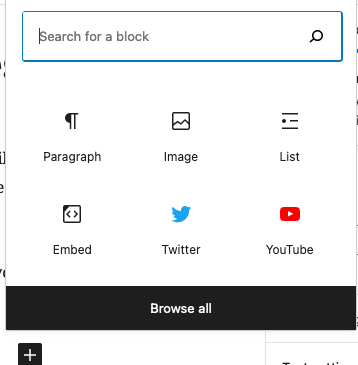
When you select IMAGE instead of PARAGRAPH, however, you’re going to get a different toolbar that looks like this.

So let’s start at the beginning. You have to have an image to add. This image should be your own image (a photo or a graphic you’ve made) because it’s illegal to steal other people’s work and also using your own work will make your blog look like your own. If you can, resize your image if it is very large (500-1000 pixels is fine for web) but you will also have a chance to resize the image once you’ve uploaded it.
When you go to add an image, a new box pops up that looks like this:
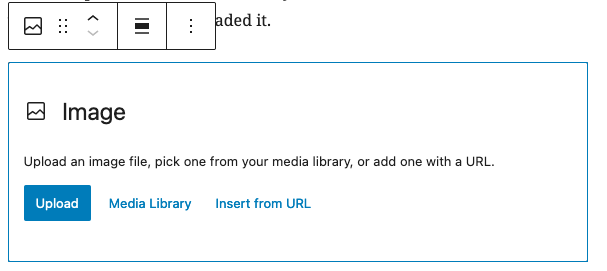
Click UPLOAD and select your image from your computer. (Select from MEDIA LIBRARY if you’re using an image you’ve uploaded to your website already.)
And your image should appear like magic.
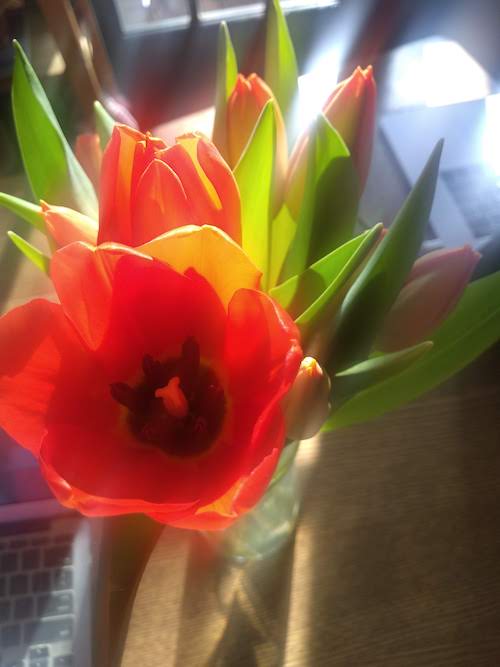
But what if you want to make changes to the way the image looks on your site?
Time to explore the tool bar!

Use the arrow keys to move your IMAGE BLOCK up and down between the the other blocks in your post.

Use the alignment key to centre your image or align it with either of your margins.

*If you would like to embed your image within a block of text (as I am doing in this paragraph, as opposed to above where the image is centred), you will often have to resize the photo down, but that’s easy to do. Do you see the SETTINGS menu on the right-hand side of your screen? (If it’s not visible, it should appear when you click the button that looks like a cog on the top right-hand size of your screen.) The menu will be different based on what kind of block you’re working on (PARAGRAPH, IMAGE, etc.) If Image is selected and you scroll down on that menu, you should see something like this:
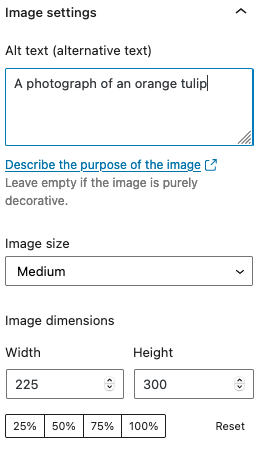
The options for IMAGE SIZE are “Thumbnail” (very small!), “Medium” and “Large.” I selected MEDIUM for this image, and then I clicked the alignment key in my toolbar, selected RIGHT, and the image was embedded automatically.
*You can see that I also added ALT TEXT to make my site more accessible to users with visual impairments!

Use the LINK button to add a link to your image, if that makes sense for you to do. Users are usually compelled to click on interesting images. I often blog about books and when I use an image of the book’s cover, I will usually add a link in the image to where the book can be purchased. When you click on the link button, a space will appear for you to paste the URL to where your link will direct.

The final button is EDIT. I don’t typically edit my images in WordPress, and feel more comfortable doing it with other software, but you can play around here and see what happens.
If everything goes wrong, remember that pressing COMMAND Z on a Mac or CONTROL Z on a PC will take you back a step so that you can get unsnarled—always good advice to remember.
Have fun!

